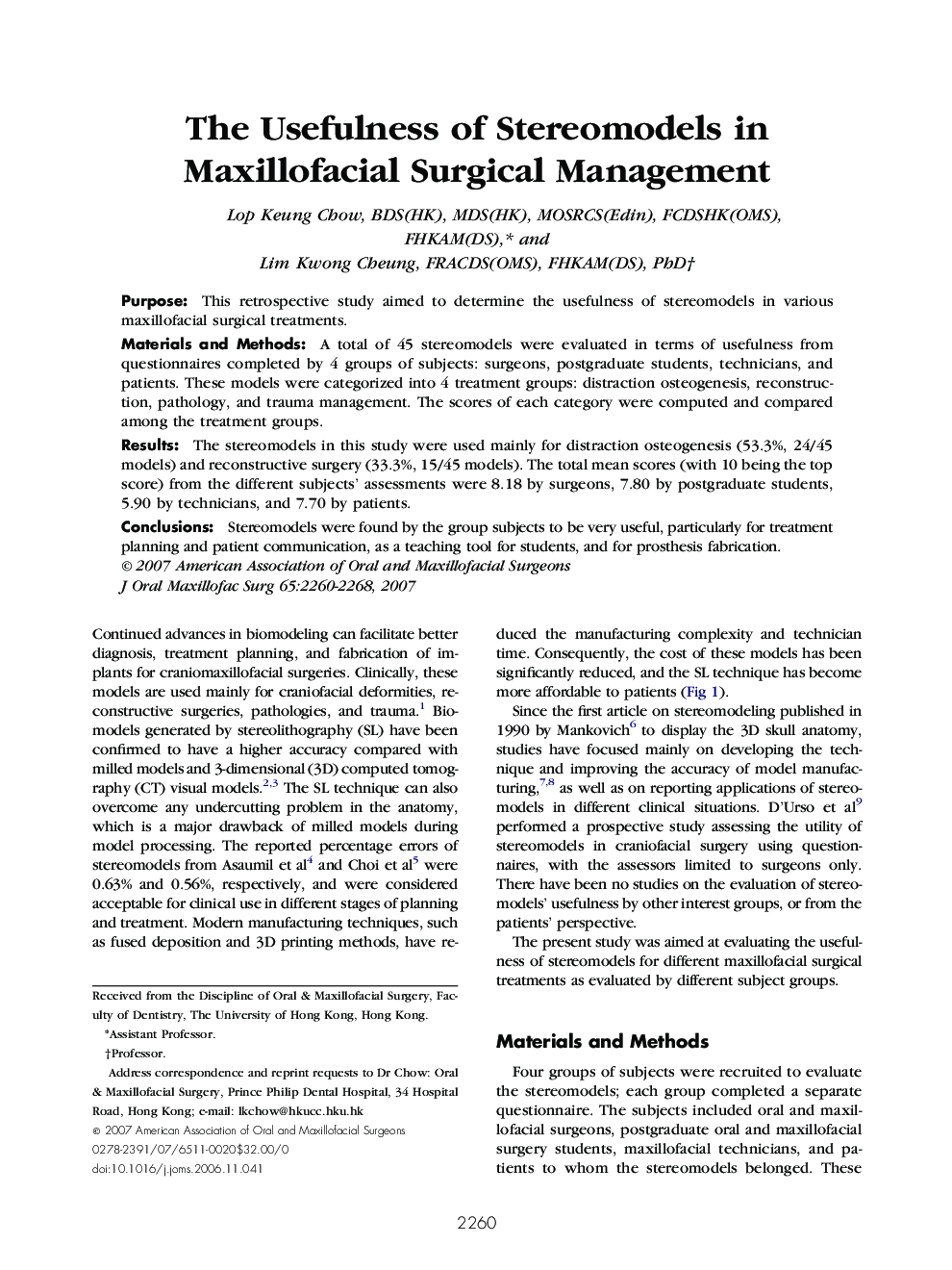| Article ID | Journal | Published Year | Pages | File Type |
|---|---|---|---|---|
| 3158686 | Journal of Oral and Maxillofacial Surgery | 2007 | 9 Pages |
PurposeThis retrospective study aimed to determine the usefulness of stereomodels in various maxillofacial surgical treatments.Materials and MethodsA total of 45 stereomodels were evaluated in terms of usefulness from questionnaires completed by 4 groups of subjects: surgeons, postgraduate students, technicians, and patients. These models were categorized into 4 treatment groups: distraction osteogenesis, reconstruction, pathology, and trauma management. The scores of each category were computed and compared among the treatment groups.ResultsThe stereomodels in this study were used mainly for distraction osteogenesis (53.3%, 24/45 models) and reconstructive surgery (33.3%, 15/45 models). The total mean scores (with 10 being the top score) from the different subjects’ assessments were 8.18 by surgeons, 7.80 by postgraduate students, 5.90 by technicians, and 7.70 by patients.ConclusionsStereomodels were found by the group subjects to be very useful, particularly for treatment planning and patient communication, as a teaching tool for students, and for prosthesis fabrication.
